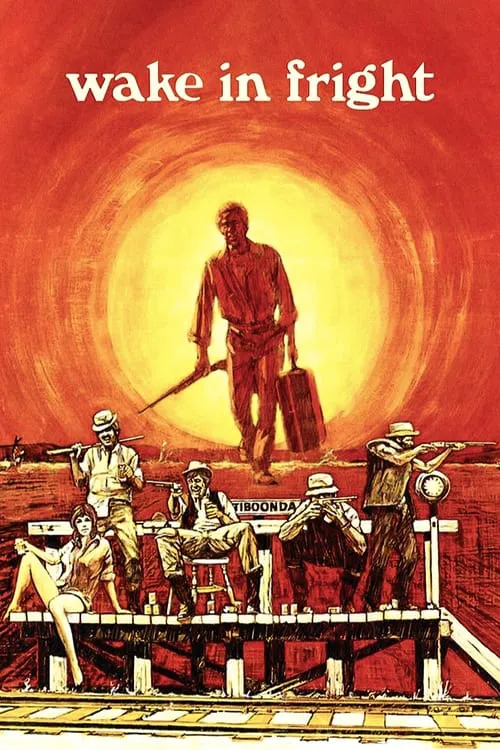Wake in Fright

Plot
Released in 1971, "Wake in Fright" is a psychological drama directed by Ted Kotcheff and based on the novel of the same name by Kenneth Cook. Set in the desolate and unforgiving landscape of outback Australia, the film follows the downward spiral of a young schoolteacher named John Grant, portrayed by Gary Bond. Grant arrives in the small, seemingly quaint mining town of Bundanyabba, colloquially referred to as "The Yabba," in search of some much-needed relaxation and an opportunity to reconnect with a former flame, Mary Heston, played by Judy Morris. Initially, Grant's visit appears to be a brief respite from the monotony of his life as a schoolteacher in a distant town. However, upon his arrival, he encounters a world that is far removed from the comforts of city life. Bundanyabba, or "The Yabba," proves to be a bleak and unforgiving environment that slowly drains Grant's sense of morals and composure. The town, dominated by rugged male miners who prioritize excess and debauchery, presents a world where women are objectified and social norms are lax. Grant finds himself increasingly drawn into the orbit of the town's inhabitants, including his charismatic but menacing acquaintance, Doc, played by Chips Rafferty. Through Doc, Grant becomes immersed in the world of drinking, whoring, and fistfights that has come to define the town's culture. Doc is a master manipulator who skillfully preys on Grant's vulnerabilities, tempting him with the promise of camaraderie and acceptance in a harsh and unforgiving environment. Doc's motives remain unclear, but it is evident that he takes great pleasure in watching John Grant's descent into madness. Grant's transformation from a self-identified man of morality and principle to a reckless and morally bankrupt individual is both captivating and disturbing to watch. His interactions with Mary, who he initially visits, serve as a poignant reminder of the man he once was and the life he left behind. The relationship between Grant and Mary is complex, with Mary struggling to reconcile her loyalty to her partner with a growing attraction to the charming and vulnerable Grant. As Grant becomes increasingly entrenched in the town's culture, his relationship with Doc reaches a boiling point. The confrontation between Grant and Doc is both intense and terrifying, capturing the sense of desperation and futility that pervades the town. Grant's fate serves as a grim reminder of the perils of unchecked male aggression and the devastating consequences of succumbing to its temptations. "Wake in Fright" is a gripping and unflinching portrayal of a man torn apart by the societal pressures that surround him. As Grant's world descends into chaos, the film raises fundamental questions about the human condition, identity, and the role of society in shaping our moral compass. Ted Kotcheff's cinematography, working in tandem with cinematographer David Eggby, crafts a visually compelling and hauntingly beautiful landscape that brings the unforgiving environment of the Australian outback to life. The production design emphasizes the gritty reality of outback Australia, where basic comforts and amenities are scarce, and the harsh climate poses a constant threat to survival. In "Wake in Fright," Kenneth Cook's source material is perfectly captured by director Ted Kotcheff's vision and skill. The result is a powerful and unrelenting critique of a society in moral decay, with Grant's fall serving as a symbol of the destructive consequences of succumbing to societal pressures and expectations. Ultimately, "Wake in Fright" is a chilling and unforgettable portrait of a man torn apart by the forces of social conformity and a harsh, unforgiving environment that seeks to break him.
Reviews
Recommendations




